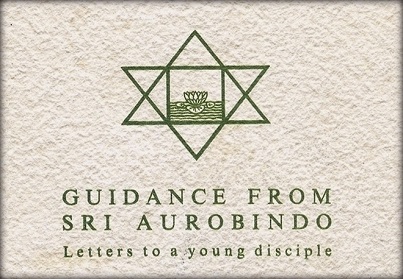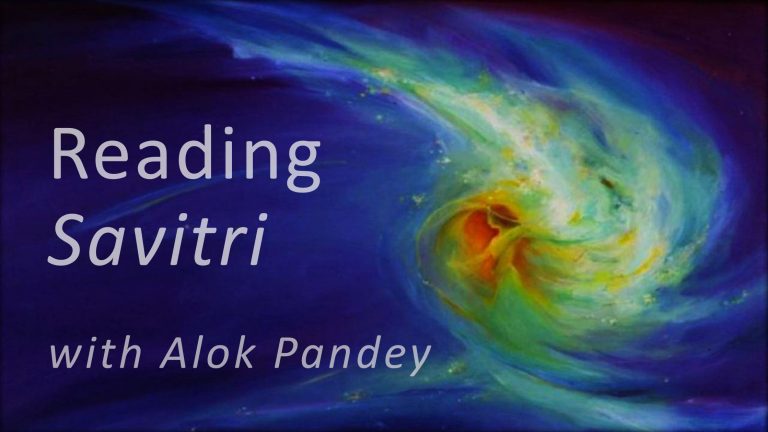
There are long plunges into the passive peace and silence and yet no dynamic action in spite of my rejection of ego-centricity.
It always happens like that so long as the nature is not ready for the continued dynamic action. If the ego and its results are gone, then there can be no harm in having intervals of passive peace and silence.
I was not speaking about a state of lapse, but of a condition of continued sadhana without any dynamism.
My answer stands. There is nothing wrong in having intervals of passive peace without anything happening — they come naturally in the sadhana as a basis for fresh action when the nature is ready for it. It is only the vital attitude that turns it into a disharmony, because somewhere in its being there is not the assent to or participation in the peace and passivity. To be able often to rest, repose in all the being outspread in the silent Brahman is an indispensable thing for the Yogi. But the vital wants always fuss, action, to feel that it is somebody doing something, getting on, having progress, on the move. The counterpart to this rajasic fuss is inertia. If the whole being can widen itself out, rest outspread in the silence, then progressively inertia fades out and gives place to shama.
What happens when inertia turns into shama?
If it is turned into shama, then you will not feel tamasic or inert, only a calm repose pervading the being.
Passive peace is always the first proper basis. Those who get force first have no settled basis, so long as peace is not there.
You have said that most people do not find it difficult to bear the state of emptiness without any activity in the inner being. Then why do I find it difficult?
Most people means most who have the tendency or will to Yoga, for silence of the being is the first natural aim of the Yoga. You and some others do not find satisfaction in it because you have not overcome the vital mind which wants always some kind of activity, change, doing something or something happening. The eternal immobility of the silent Brahman is a thing it does not relish. So when emptiness comes, it finds it dull, inert, monotonous.
There is no necessity of explanation. Your mind creates problems and difficulties where none really exist. There is always the idea behind that passive peace is an undesirable thing. On the contrary it is the state of the silent Impersonal and an essential element and sure basis of the mukta condition and one can always rest in it whenever necessary with advantage.
During the morning meditation for some moments I felt as if I was a huge stone or a mountain. Was it an experience of wideness?
The wideness is rather a feeling of being far-spreading or all-pervasive to all sides and above and below without end. This must be an experience of the consciousness enlarged in a massive stillness.
Since 3 p.m. I feel much intoxicated. I find that the active parts of my being have fallen blank and the other parts are as if nonexistent. I feel myself nowhere, not even in Nothingness, Sunya. Enriched heavy peace and silence are obviously in their increasing fullness. Is this intoxication tamasic or spiritual?
If peace and silence are in their increasing fullness, it can’t be a tamasic intoxication, — I don’t know that there is such a thing. If there is, it could only be an overwhelming dullness. This is simply a deepening of the silence of the self in the whole being.
In such a condition what is best to be done — meditation, reading or working?
Any of them.
To my question, “In a deepened silence why do I feel myself nowhere, not even in Sunya? where then do I go?”, you wrote, “I suppose you feel yourself nowhere because you are accustomed to regard the individual consciousness as somewhere and this experience goes outside that somewhere.” What is this “somewhere” and what is meant by going out of it?
I said the individual consciousness is felt by you as the only definite plane of your existence. When your consciousness spreads out of it, you feel as if you had gone out of all planes of existence, that you are nowhere.
Sometimes I go out of my small self and enter into some other plane of consciousness or existence. In this plane there seems to be no thought, movement or action of its own. How can I then distinguish it as a definite plane? I feel there only empty peace and silence.
Because it is the silent static self into which you rise.
From 12 noon to 5 p.m. my inner being was in a quiet repose. During this long period of peace there was no intensity or zeal.
A peaceful state is the basis of the Yogic consciousness. It is only when that is accepted and fully established that the true intensity and energy can come.
Equanimity and peace in all conditions in all parts of the being is the first foundation of the Yogic status. Either Light (bringing with it knowledge) or Force (bringing strength and dynamism of many kinds) or Ananda (bringing love and joy of existence) can come next according to the trend of the nature. But peace is the first condition without which nothing else can be stable.
Since yesterday, so far as I am conscious, I try to live in the Self. This has such an effect on the lower nature that it gives up any attempt to pull me down. However, this is not enough. I must be able to live in the Self all the time and not merely during motionless meditations.
Yes, that is it.
The peace, silence or pure-existence is no more felt merely as an experience.
Good.
Passive peace is not supposed to do anything. It is by its complete solid presence alone that all disturbance is pushed out to the surface or outside the consciousness.
Today during the work I felt a special peace which gave me an automatic separateness — a peace which was not experienced even in my static meditation. The inertia had no effect on it!
Peace and separateness need not be affected and have not to be affected by inertia — it is only so affected if it is incomplete.
Yesterday I realised that my mental ideas about the lack of dynamic action were wrong. Why? The mind brings in its own ignorant methods of understanding what is beyond its range. Let me describe my experience.
After half an hour of feeling Mother’s touch, even my subtle body was falling slowly into silence. Then such a complete peace and silence possessed my mind and body that one may call it a conscious samadhi. In place of my outer self I experienced a solid peace and stillness almost unconnected with me. Then came Mother’s Force which reached up to the inner physical. As the descent took place in the midst of solid peace and silence, there was no rajasic movement, which is otherwise so common. The Force came and worked in such a quiet and spontaneous way that one may well doubt if it was really a Force and not merely a deep peace.
It is this quiet and spontaneous action that is the characteristic divine action. The aggressive action is only, as you say, when there is resistance and struggle. This does not mean that the quiet force cannot be intense. It can be more intense than the aggressive, but its intensity only increases the intensity of the peace.



About Savitri | B1C1-09 Advent of the Divine Mother (p.4)